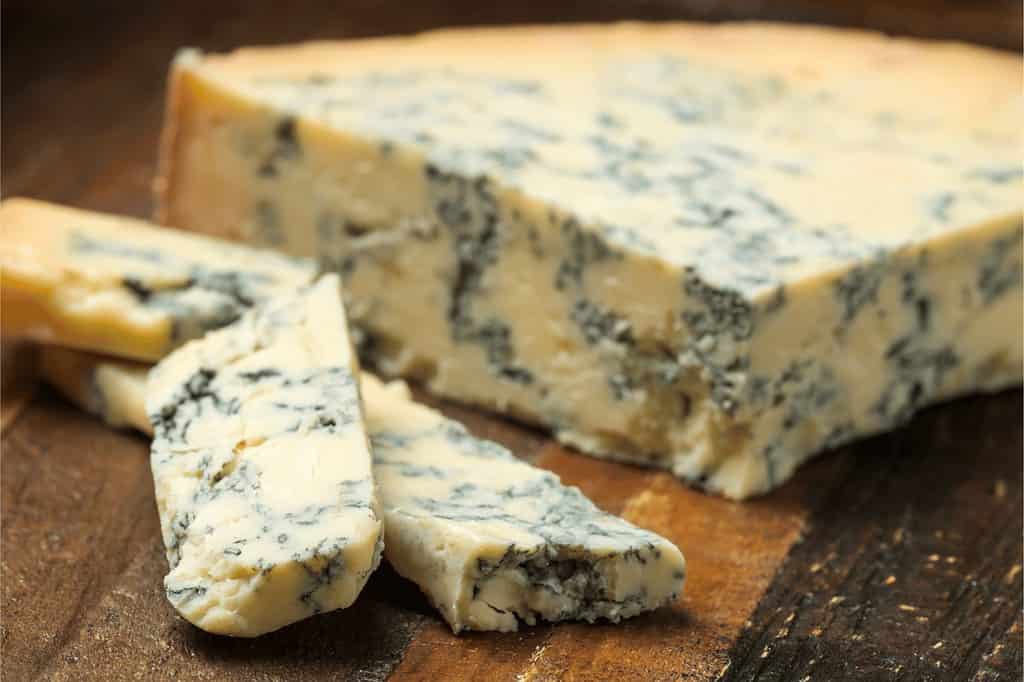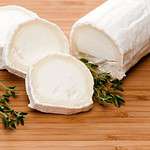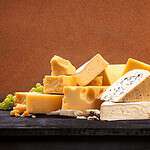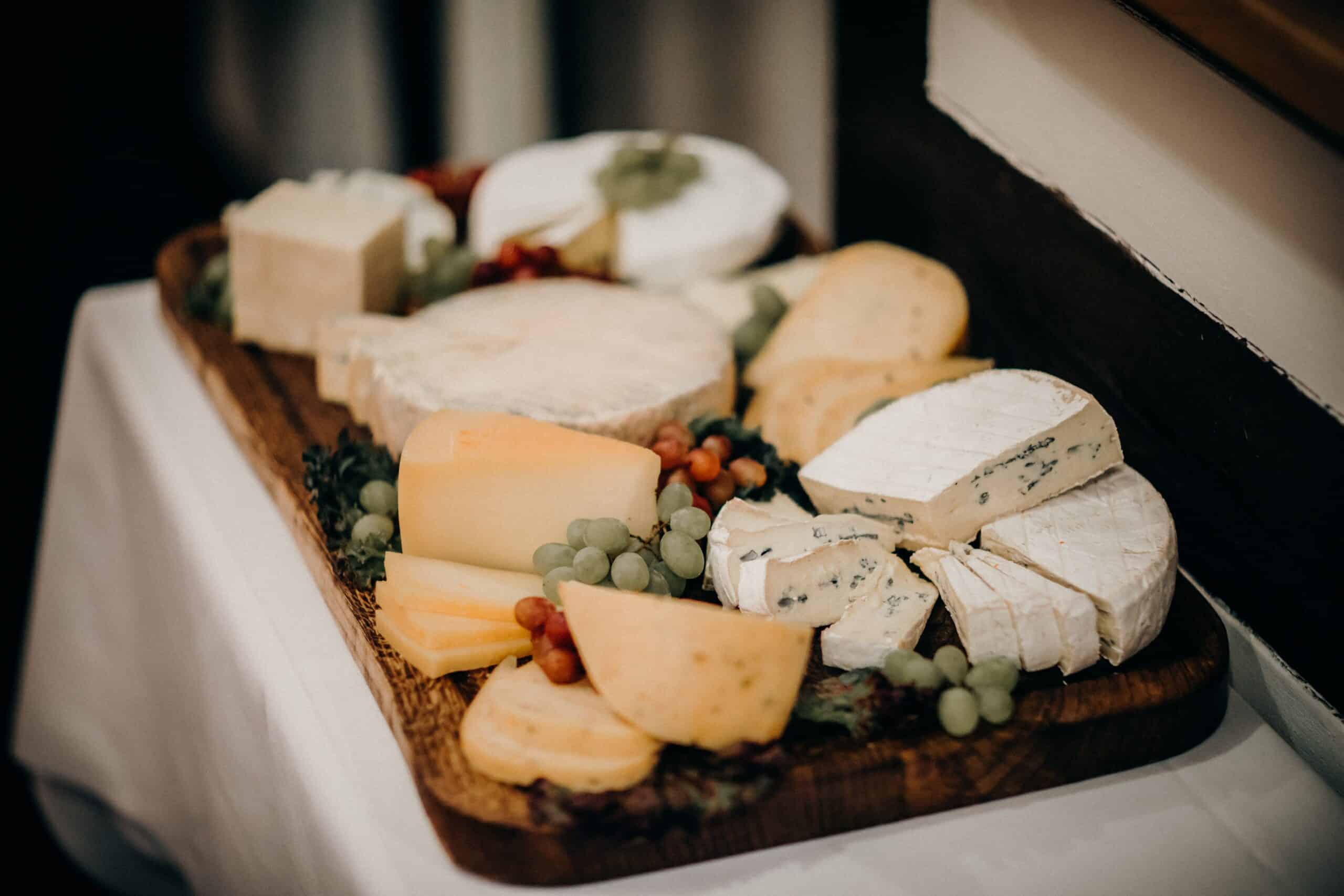Blue cheese is a distinct category of cheese that boasts a unique flavor profile due to the presence of Penicillium cultures. To create this celebrated cheese, cheesemakers start with cow, sheep, or goat milk and introduce cultures of the mold Penicillium, which imparts blue cheese with its characteristic veins or spots. The cheesemaking process involves a series of precise steps, including curdling the milk, processing the curds, salting, and then aging the cheese under controlled conditions that encourage the growth of the mold.
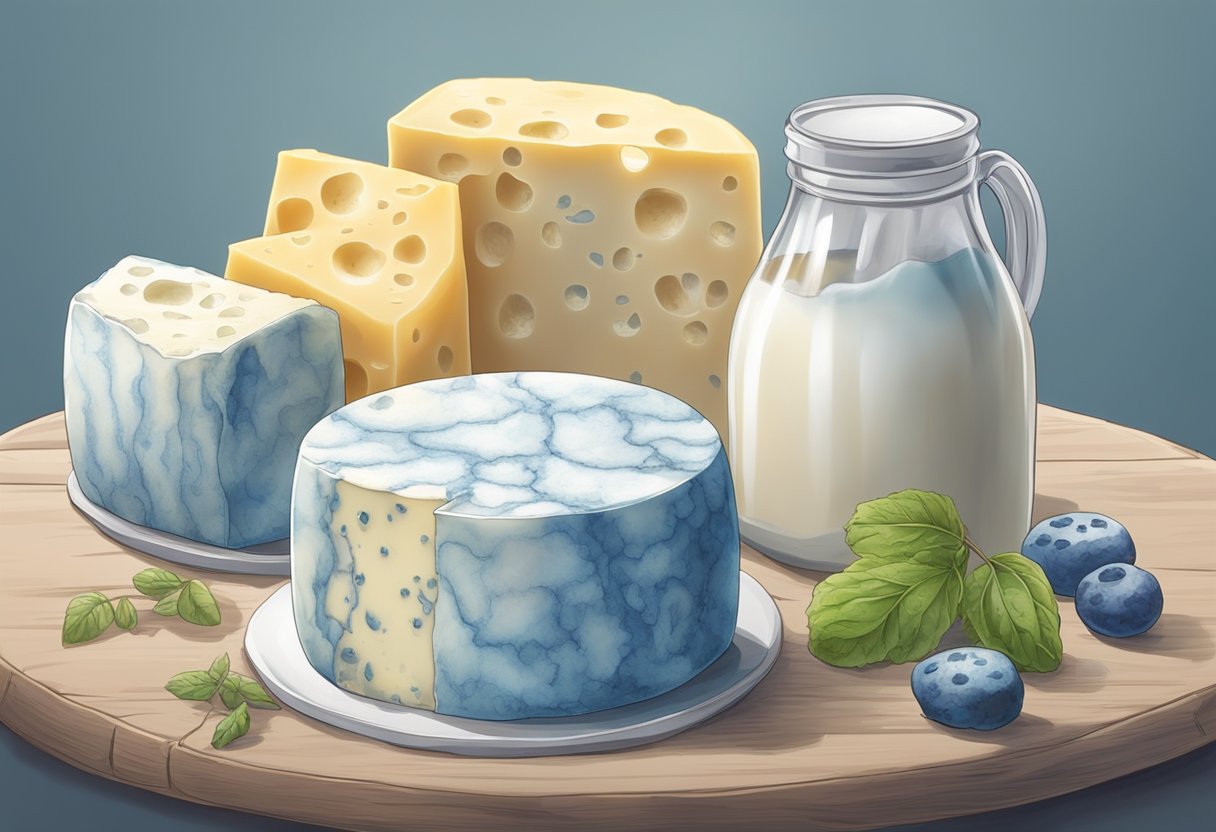
The diversity of blue cheeses available is as rich as its history, with varieties that range from smooth and creamy to crumbly and sharp. Each type offers a different experience, influenced by the milk’s origin, the specific strains of Penicillium used, and the aging period. Blue cheese serves not only as a staple on cheese boards but also adds depth to a variety of culinary dishes. Its intense flavor complements salads, pastas, and sauces, and it pairs exceptionally well with fruits and wines, enhancing the overall dining experience.
Key Takeaways
- Blue cheese is crafted using milk and Penicillium mold to achieve its unique flavor and texture.
- Various types of blue cheese exist, each with distinctive characteristics shaped by the milk source and aging process.
- Aside from being a culinary delight, blue cheese is integral to certain cultural dishes and can be paired with a multitude of foods and wines.
History and Origins
In tracing the lineage of blue cheese, we encounter a robust tale woven into the cultural fabric of regions famed for this culinary specialty. Our journey begins with ancestral methods and spans to the geographical imprint that has made blue cheese a gastronomic icon.
Traditional Origins
Originating in the Middle Ages, the inception of blue cheese is often attributed to chance. A key locale is France, where the legend speaks of cheese left in the limestone cliffs of Roquefort-sur-Soulzon. Here, the mold Penicillium roqueforti, indigenous to the caves of the region, naturally inoculated the cheese, giving birth to the distinct veins of blue-green mold that characterize Roquefort, one of the first blue cheeses.
- Location: France, Roquefort-sur-Soulzon
- Era: Middle Ages
- Caves: Limestone cliffs of Roquefort
Geographical Significance
Our recognition of blue cheese’s geographical significance is affirmed through designated certifications. Local environments, like the caves in Roquefort, provide unique conditions that are essential to the cheese’s maturation process. These areas have become inextricably linked to blue cheese, ensuring that Roquefort, for example, can only be produced in its native commune, securing its legacy and authenticity.
- Protected Designation: Roquefort
- Unique Conditions: Cave maturation
- Cultural Link: Production tied to origin location
Types of Blue Cheese

Blue cheeses are renowned for their unique flavors and textures. We categorize these cheeses into classic varieties that have stood the test of time and modern innovations that offer new twists on the traditional blue.
Classic Varieties
Roquefort: This cheese, hailed from France, is one of the world’s best-known blue cheeses. It is made from sheep’s milk and has a distinct sharp flavor.
Stilton: A quintessential British blue cheese, Stilton boasts a rich and creamy texture with a strong taste.
Gorgonzola: An Italian delicacy, Gorgonzola ranges from mild to sharp in flavor and is known for its soft and crumbly consistency.
Danablu (Danish Blue): Another European favorite, Danablu presents a milder option with a semi-soft texture.
Modern Innovations
Cambozola: A modern cheese that combines the creamy texture of Camembert with the distinctive mold of Gorgonzola, ideal for those who prefer a milder blue cheese.
Blue Castello: A Danish innovation, Blue Castello is known for its rich and buttery flavor, offering a brie-like softness.
Saint Agur: Created from cow’s milk, Saint Agur is a creamy and smooth blue cheese with a balanced flavor profile.
Bleu d’Auvergne: Originating from the south of France, this cheese offers a creamy yet pungent flavor, bringing a bold addition to the blue cheese family.
In our exploration, we cover a range of cheeses that exemplify the classic and innovative approaches to blue cheese production. Each type of cheese carries distinct characteristics and origins, continuing the rich tradition of this beloved dairy category.
Milk and Other Ingredients
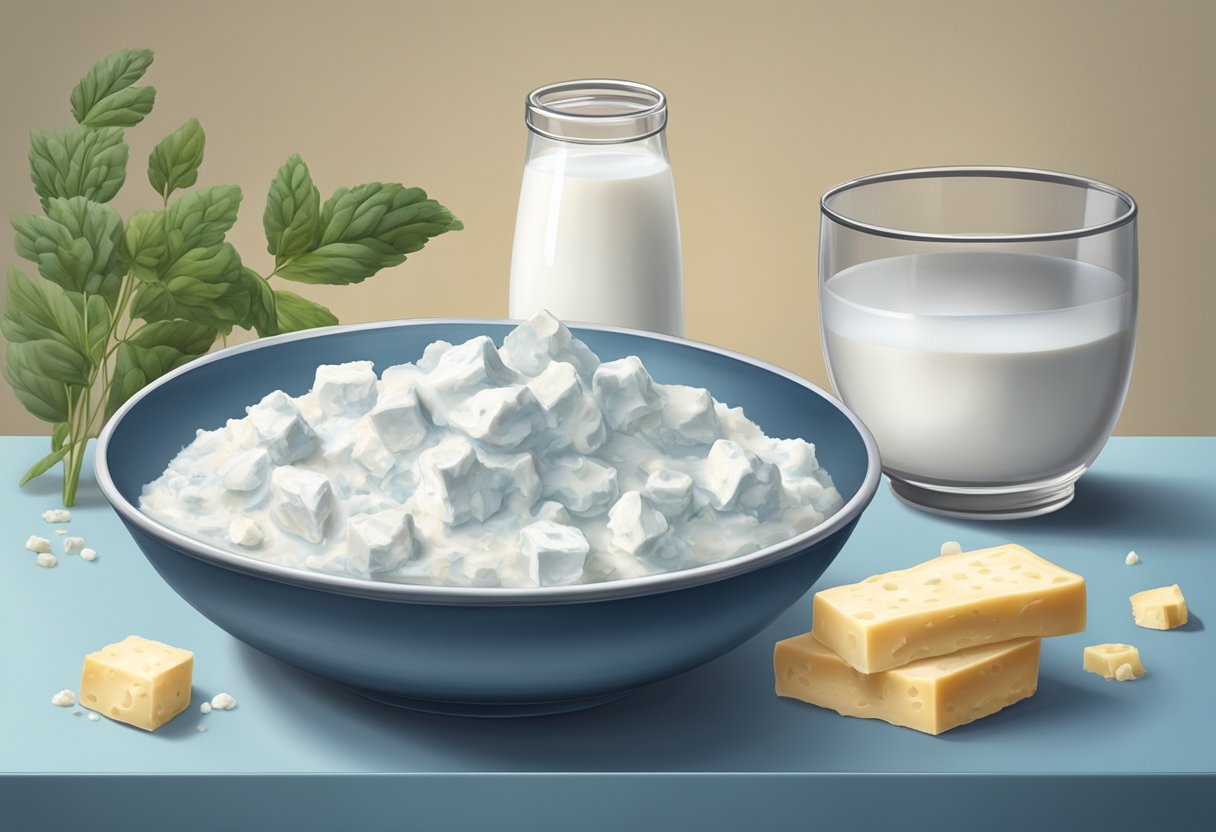
In the making of blue cheese, the quality of milk and the choice of additional ingredients are crucial for imparting the desired flavor and texture. We carefully select the milk and precisely measure additional ingredients to craft cheeses with distinctive blue-veined characteristics.
Selection of Milk
The foundation of blue cheese is milk. It can be sourced from cows, sheep, or goats, but the most common varieties are cow’s milk and sheep’s milk. We often prefer raw milk due to its robust flavor profiles, though pasteurized milk is frequently used for safety and consistency. The selection is guided by regional cheese-making traditions and the specific blue cheese variety being produced.
- Cow’s milk: Provides a creamier texture and is widely available.
- Sheep’s milk: Yields a richer and more tangy blue cheese.
Additional Ingredients
Once the milk is selected, we incorporate a few key ingredients:
- Cultures: These are beneficial bacteria that acidify the milk and begin the cheese-making process. They help develop the cheese’s flavor and texture.
- Rennet: A coagulating agent, rennet is introduced to solidify the milk into curds.
- Salt: This ingredient is used for flavor and acts as a preservative to enhance the cheese’s shelf life.
Here’s a basic blueprint of our additional ingredient mix:
| Ingredient | Purpose |
|---|---|
| Cultures | Acidify milk and develop flavor |
| Rennet | Coagulate milk into curds |
| Salt | Flavor enhancement and preservation |
Each plays a pivotal role in blue cheese production, turning our selected milk into the savory, piquant cheese that is beloved by many.
The Production Process
We’ll be exploring the specific steps involved in the production of blue cheese, from curd formation to the intricate aging process where its distinctive flavor and appearance develop.
Curd Formation
In the initial stage, milk is warmed to a precise temperature to facilitate the growth of cultures. We add bacteria to the milk for acidification, which alters the pH of the milk. As the acidity increases, we introduce rennet, an enzyme which causes the milk to coagulate. This separates the milk into solid curds and liquid whey.
Salting and Molding
After the curds have formed, we drain off the whey and add salt to the curds. This not only flavors the cheese but also plays a crucial role in inhibiting the growth of unwanted bacteria. We then transfer the salted curds into molds, giving the cheese its form. At this point, some producers may choose to add Penicillium roqueforti spores, the specific mold responsible for the characteristic veins in blue cheese.
Aging
Finally, we age the molded cheese at a controlled temperature and humidity. During this phase, we ensure adequate oxygen supply which is critical for the mold to develop. The Penicillium roqueforti proliferates, developing the blue-green fungal veins throughout the cheese. This aging process, which can last from a few weeks to several months, allows the cheese to develop its distinctive strong and tangy flavor profile.
Characteristic Profile

In assessing blue cheese, we focus on its unique texture and appearance as well as its complex flavor profile. These characteristics define blue cheese and are the result of its distinctive manufacturing process.
Texture and Appearance
Blue cheese is immediately recognizable by its texture that ranges from crumbly and firm to soft and creamy, depending on the variety. Moreover, the marbling of blue to green veins is a key visual marker, which comes from the Penicillium mold strains used during production. These veins are not just aesthetic; they contribute significantly to both the texture and the flavor.
Flavor Profile
As for the flavor, blue cheese is known for a sharp, distinctive flavor that can be described as tart, earthy, and sometimes nutty. Each variety may express these flavor notes in different intensities, with some being decidedly pungent. We recognize this profile as a hallmark of the cheese, offering a rich experience for the palate.
Health and Nutrition

We must consider the nutritional profile of blue cheese as it contributes valuable nutrients to our diet. Below, we provide detailed nutritional information.
Nutritional Information
Blue cheese is a rich source of essential nutrients. Specifically, it contains significant levels of protein, which is vital for muscle repair and growth. Here’s what typically can be found in a 1-ounce (28 grams) serving of blue cheese:
- Calories: Approximately 100
- Protein: About 6 grams
- Fat: Roughly 8 grams, with 5 grams being saturated fat
- Carbohydrates: Generally less than 1 gram
- Calcium: Close to 150 milligrams
- Phosphorous: Usually about 90 milligrams
Since blue cheese is created through the fermentation process, the presence of lactose is minimal. This makes it a more digestible option for individuals with lactose intolerance.
In summary, blue cheese contributes to our nutritional intake especially by providing high-quality protein and important minerals like calcium and phosphorous. However, due to its high saturated fat content, mindful consumption as part of a balanced diet is recommended.
Culinary Uses
Blue cheese’s bold and tangy flavor profile makes it a distinctive ingredient in many dishes. We carefully pair it with compatible foods and incorporate it into recipes to enhance and balance taste.
Cheese Pairings
When pairing blue cheese with other edibles, our aim is to complement its robust flavor without overpowering the palate. Below is a table summarizing ideal partners for this cheese.
| Cheese Pairing | Companions |
|---|---|
| Bread & Crackers | Artisan breads, whole-grain crackers |
| Fruit | Figs, pears, and apples |
| Nuts | Walnuts, pecans, and almonds |
| Dressing & Sauce | Sweet and acidic like balsamic reductions |
Blue Cheese in Recipes
We make use of blue cheese in various recipes to add a depth of flavor. For instance:
Salads: A classic way to enjoy blue cheese is crumbled over greens. The sharpness of the cheese pairs well with the crispness of the salad, and it works especially well with dressings based on balsamic or fruit vinegars.
Steak: A slice of blue cheese melting atop a hot steak creates a sumptuous sauce that complements the rich, savory taste of the meat.
Frozen Delights: Though less common, we might sprinkle blue cheese over a frozen dessert, like a pear sorbet, to create a surprising and delightful contrast.
Storing and Serving Tips
When we store blue cheese, our goal is to preserve its distinct flavor and texture. Serving it properly allows us to enjoy its unique taste to the fullest.
Preserving Quality
To maintain the cheese’s quality, we must focus on the humidity and moisture levels. Blue cheese prefers:
- Temperature: Store it between 34°F and 38°F.
- Humidity: Aim for 85-90% to prevent drying out.
- Wrapper: Use wax or parchment paper, followed by a loose covering of aluminum foil. This method helps balance moisture and allows the cheese to breathe.
- Placement: Keep blue cheese in the vegetable compartment of the fridge as it’s typically higher in humidity.
Remember, the rind of blue cheese is as important as the interior. It’s edible and contributes to the character of the cheese, so make sure it remains unblemished by proper storage.
Serving Suggestions
To serve blue cheese at its best, consider these tips:
- Temperature for serving: Take it out of the refrigerator about an hour before serving. Room temperature enhances the flavors.
- Accompaniments: Pair with foods like fruits, nuts, or honey to complement its bold flavor.
- Portion sizes:
- Small gatherings: 3 to 4 ounces per person.
- Large events: 2 ounces per person, as there are typically other cheeses and dishes.
It’s crucial to cut blue cheese cleanly to preserve its structure. Use a sharp knife and clean between slices to avoid sticking.
Legislation and Standards
As we explore the world of blue cheese, it’s critical to understand the regulations and standards that govern its production. These rules ensure that every piece of blue cheese we enjoy meets strict quality and safety standards.
Production Regulations
Our production processes for blue cheese are heavily regulated to ensure safety and quality. The legislation primarily focuses on the cheese’s microbiological criteria, which includes the use of specific strains of Penicillium glaucum or Penicillium roqueforti for mold development.
Producer & Cheesemaker Responsibilities: We must adhere to precise hygiene standards throughout the cheese-making process. This starts from handling the milk to the final packaging of the cheese.
- Milk Treatment: The milk used must be pasteurized or come from a certified raw milk source.
- Starter Culture: A starter culture, often containing lactic acid bacteria, is added to milk to begin fermentation.
- Coagulation: The addition of rennet coagulates the milk, forming curds.
Aging Process: The aging process for blue cheese is regulated to ensure proper mold growth. We puncture the curds to allow air to enter, which promotes the growth of the Penicillium mold.
- Temperature & Humidity: Specific conditions must be maintained during aging to facilitate the proper development of flavor and texture.
Health & Safety Standards: We are responsible for conducting regular testing to detect any harmful bacteria and ensure that the levels of Penicillium spores remain within safe limits.
Labeling: Our labeling practices must comply with food labeling regulations, providing clear and accurate information about the ingredients, particularly highlighting the presence of specific molds used in production.
By meticulously following these guidelines, we ensure that every batch of blue cheese is of the highest quality, offering a safe and delightful experience to consumers.
Cultural and Economic Impact
Blue cheese plays a significant role both culturally and economically, especially in regions known for their production. Its standing as a delicacy has implications for local economies and global markets.
Influence on Local Economies
Lombardy and Piedmont are prime examples of how blue cheese production can bolster a local economy. These specific Italian regions have gained international recognition for their exquisite varieties of blue cheese:
- Gorgonzola, with its rich veins of blue mold, is a source of pride in Lombardy.
- In Piedmont, Robiola is often a mixture where blue veins are a feature in some varieties, contributing to the region’s culinary reputation.
Such cheeses drive tourism and create jobs in agriculture and artisanal cheese production sectors. In the English Midlands, the production of blue cheese such as Stilton similarly supports local communities, with a protected designation of origin ensuring the cheese can only be made in certain areas, preserving local traditions and employment.
Global Presence
Blue cheese’s influence has transcended local boundaries, achieving a global presence that makes it a significant economic commodity. For example:
- Funen, Denmark, has utilized its cheese-making heritage to export blue cheeses worldwide, earning a portion of the global blue cheese market share.
- The double-cream blue cheeses have captivated international consumers, allowing us to further penetrate global markets.
- Italy has successfully marketed its blue cheeses, riding on the appeal of its national cuisine to promote products like Gorgonzola and other regional cheeses abroad.
Such global recognition has not only increased demand for these cheeses but also cemented their status as a cherished delicacy on the international stage.
Innovation and Future Trends
In the ever-evolving world of blue cheese production, we see persistent innovation shaping the future of this cherished delicacy.
Emerging Varieties and Techniques
We are witnessing the rise of new blue cheese varieties that explore unexpected flavors and textures. Danish blue cheeses are integrating novel aging processes to enhance the sharpness and develop a more pronounced taste profile. In the realm of Gorgonzola, innovative methods are being adopted to balance its inherent creaminess with a surprising hint of sweetness.
| Cheese Type | Innovation Effort |
|---|---|
| Stilton | Experimenting with milder notes |
| Danish | Sharper flavor development |
| Gorgonzola | Enhanced creaminess |
Our techniques are also evolving. We now employ more sophisticated ripening environments to perfect the balance between mould growth and cheese maturation. This allows us to craft a blue cheese that can range from delicately sweet to robustly sharp, catering to a broader palate.
The world of soft cheeses like Brie and Camembert inspires our approach too. We’re exploring ways to incorporate blue veining into these creamy classics, resulting in unique hybrids that promise to redefine consumer expectations. As we develop these new cheeses, we ensure that our pursuit of innovation remains rooted in the time-honored traditions of cheese making.
Pairing and Tasting
When we pair blue cheese, we aim to balance its bold flavors with complementary tastes and textures. Through professional tasting techniques, we can appreciate the nuances of blue cheese even more.
Pairing with Wines and Other Beverages
- White Wines: We often match blue cheese with sweet white wines. A classic pairing is blue cheese with Sauternes, a sweet wine from the Bordeaux region of France, which can balance the strong and salty characteristics of the cheese.
- Red Wines: If we choose a red wine, we look for ones with sweet, fruity notes to contrast the tang of blue-veined cheese. A good example would be a Port wine or a sweeter Zinfandel.
- Beer and Spirits: Bold beers like stouts or barleywines harmonize well with the robust flavors of blue cheese. Spirits such as whiskey can also pair nicely, particularly those with a sweet or smoky profile.
Professional Tasting Techniques
- Visual Inspection: We start by observing the texture and veining of the cheese. Cambozola, for instance, will typically have a creamier texture with delicate blue veins.
- Olfactory Assessment: Smell is an integral part of tasting blue cheese. Our noses can detect whether the cheese has a more pungent aroma or a milder, more nuanced scent.
- Taste Evaluation: In small bites, we let the cheese coat our palate, noting the balance between salty and sweet elements and how they interact with our chosen liquid pairing.
- Texture Analysis: We pay attention to the mouthfeel—whether it’s creamy, crumbly, or somewhere in between—as this can significantly affect pairing choices for recipes and beverages.
Challenges in Production
In blue cheese production, maintaining the delicate balance between fostering beneficial mold growth and preventing undesirable bacteria is crucial. We must also prioritize the consistent production of high-quality, safe cheese.
Controlling Mold and Bacteria Growth
When we produce blue cheese, controlling the growth of molds and bacteria is a fundamental challenge. The addition of Penicillium roqueforti spores initiates mold growth within the cheese. Yet, it’s essential to manage the spread of these spores to ensure they proliferate at the right moment and rate during ripening. These are some of the specific steps and considerations we take:
- Spore Concentration: We meticulously regulate the concentration of spores added to the cheese to avoid excessive or uneven mold growth.
- Humidity Control: Optimizing the humidity levels in aging rooms to support the growth of Penicillium roqueforti while preventing the development of unwanted bacteria.
- Temperature: Keeping the temperature consistent to encourage proper ripening without accelerating the lifecycle of undesirable microbes.
Ensuring Safety and Quality
Ensuring the safety and quality of blue cheese requires a rigorous approach:
- Toxin Management: We vigilantly monitor for the presence of harmful toxins, which can arise from unsanitary conditions or uncontrolled bacterial growth.
- Protein Integrity: Throughout the process, maintaining the structural integrity of casein micelles — the proteins in milk that form the basis of the cheese structure — is key. This ensures proper texture and flavor.
By faithfully implementing these practices, we work to deliver delicious and safe blue cheese.
Advancements in Cheese Technology
In recent years, we have witnessed significant technological advancements in the field of cheesemaking, especially concerning blue cheese production. These improvements have streamlined processes, enhanced safety, and refined the flavors and textures of the final products.
Technological Improvements in Cheesemaking
We have seen considerable progress in the cultivation and application of starter cultures and Penicillium strains used in blue cheese production. Advances in genetic sequencing allow us to identify and select strains that produce specific flavor profiles and textures. Our understanding of the microbial ecosystem has led to the development of starter cultures with higher activity levels, promoting faster and more consistent cheese ripening.
The automation of cheese vats and the introduction of computer-controlled ripening rooms have greatly improved the precision in the cheesemaking process. These innovations lead to a more controlled environment where factors such as temperature, humidity, and oxygen levels are maintained within optimal ranges to support the growth of Penicillium cultures while inhibiting the proliferation of unwanted bacteria and toxins.
We have also enhanced our methods of detecting and combating toxins in blue cheese. High-performance liquid chromatography (HPLC) and mass spectrometry are techniques we often employ to detect even trace amounts of mycotoxins, which can be produced by certain molds. This ensures that the final product is safe for consumption and meets stringent health standards.
Furthermore, the packaging technology has evolved in tandem with cheesemaking advancements. Modified atmosphere packaging, for instance, helps us prolong shelf life and preserve the quality of blue cheese by regulating the mix of gases in the cheese packaging, thus slowing down the ripening process and preventing spoilage.
Through the integration of these technological advancements, we continue to refine the art of blue cheese making, ensuring that it remains a safe, enjoyable, and high-quality product for cheese lovers around the world.
Consumer Education and Advocacy
We recognize the importance of educating consumers about the unique characteristics of blue cheese, stemming from its cultures and crafting process which results in its distinctive salty, sharp flavor and texture.
Promoting Blue Cheese
We aim to inform consumers about the cultures used in blue cheese production, which are responsible for the characteristic veining and robust flavor profile. By exposing individuals to the types of cultures, such as Penicillium roqueforti, and their role in developing the cheese’s features, we foster a greater appreciation for this specialty food.
To highlight the texture of blue cheese, which can range from creamy to crumbly, we conduct tastings that demonstrate the influence of aging and curing methods. This hands-on experience allows consumers to discern the differences themselves, creating a more educated consumer base.
The salty and sharp flavors of blue cheese are unique selling points that we emphasize. These flavors are a result of the cheese-making process, including the salt used during curing, which we clarify for consumers through detailed discussions and educational materials.
By engaging in these educational efforts, we not only champion the qualities of blue cheese but also empower consumers to make informed food choices based on their individual preferences.
Environmental Considerations
In our consideration of blue cheese production, we prioritize environmental practices that reduce ecological impact and promote sustainability.
Sustainable Practices in Cheese Production
We adopt several measures to ensure our blue cheese production is environmentally sound. We focus on the efficient use of resources, reduction of waste, and proper management of byproducts. Below, we detail some of the key initiatives:
Resource Management: We meticulously monitor our use of water and energy.
- We install low-flow systems to reduce our water usage.
- Our facilities use energy-efficient equipment to cut down on power consumption.
Waste Reduction: Minimizing waste is crucial in our production.
- We implement recycling programs for packaging materials.
- Cheese byproducts like whey are repurposed, often as feed in agriculture, to ensure nothing is wasted.
Production Efficiency:
- Lean manufacturing principles are applied to optimize production and reduce the carbon footprint.
- Our production schedule is meticulously planned to decrease energy consumption during off-peak hours.
Our efforts in these areas reflect our commitment to a sustainable approach to cheese production. As producers, we have a responsibility to both our consumers and the environment to adopt and maintain these practices throughout every stage of blue cheese production.
Role of Blue Cheese in Gastronomy
As we explore the role of blue cheese in gastronomy, we focus on its significant impact on culinary traditions and how it’s incorporated in various dishes.
Influence on Gastronomic Traditions
We observe that blue cheese has ingrained itself deeply into gastronomic traditions worldwide. Its unique taste and texture stem from the mold Penicillium roqueforti, a defining characteristic that imparts a sharp, tangy flavor desirable in many cuisines.
In salad preparations, blue cheese offers a robust flavor contrast with greens and vegetables. A classic example is the Cobb salad, where the cheese’s creaminess balances the salad’s freshness and the acid from the vinaigrette.
Speaking of dressing, blue cheese dressing is a key component in the American salad dressing repertoire. It combines buttermilk, sour cream, or mayonnaise with crumbles of blue cheese, providing a rich and tangy accompaniment to salads and even as a dip for vegetables.
Additionally, our appreciation for blue cheese extends to its use with grains. A risotto or a polenta can be elevated with the addition of blue cheese, creating a dish that resonates with bold flavors and creamy texture.
Through these examples, we appreciate how blue cheese reinforces its pivotal role in gastronomy by enhancing and transforming the culinary experience with its unmistakable mold-derived character.
Frequently Asked Questions
We will cover some common inquiries regarding the intriguing process of blue cheese production and its characteristics.
What are the primary steps involved in the production of blue cheese?
The production of blue cheese involves several critical steps: pasteurizing the milk, adding cultures and mold, curdling, cutting the curd, salting, forming, piercing, and aging.
What causes the distinctive blue veins in blue cheese?
The distinctive blue veins in blue cheese are formed by the introduction of Penicillium roqueforti or Penicillium glaucum spores during the cheese-making process, which proliferate in the air channels created by piercing the cheese.
What are the health benefits and risks associated with consuming blue cheese?
Blue cheese is a source of nutrients, including calcium and protein. However, it can be high in sodium and fat, and it may contain listeria, which is especially a concern for pregnant women or those with weakened immune systems.
How does the aging process affect the flavor and texture of blue cheese?
The aging process deepens the flavor of blue cheese, making it more complex, and can influence its texture, ranging from creamy to crumbly.
Can you recommend any alternatives to blue cheese for those with dietary restrictions?
Alternatives to blue cheese for those with dietary restrictions include cheeses made from goat’s milk, sheep’s milk, or plant-based options that mimic the blue cheese’s tangy, strong profile.
What distinguishes the different varieties of blue cheese from one another?
Different varieties of blue cheese are distinguished by the type of milk used, the specific strains of mold, the aging time, and the particular techniques employed by the cheesemakers, resulting in a spectrum of flavors and textures.

